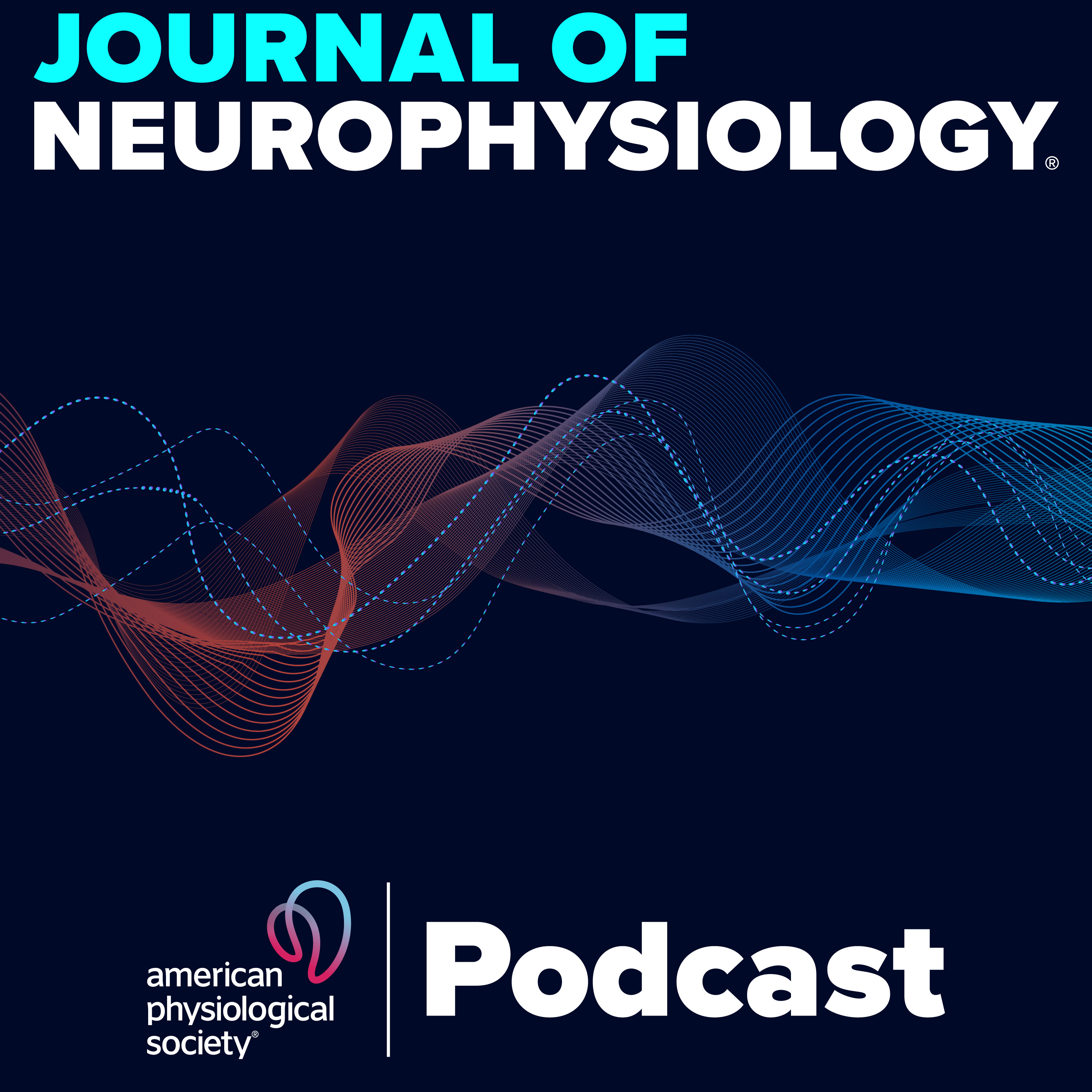Episodes
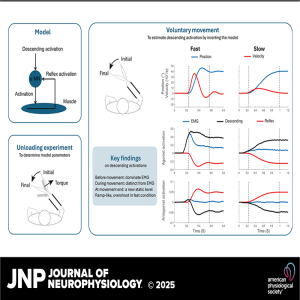
Friday Mar 07, 2025
Friday Mar 07, 2025
In this episode, coauthor Lei Zhang explores the research titled "Estimating descending activation patterns from EMG in fast and slow movements using a model of the stretch reflex." Lei introduces a novel method that directly estimates descending activation from electromyographic (EMG) signals and arm kinematics by inverting a model of the spinal stretch reflex—without relying on muscle models or an arm dynamics model. This innovative approach uncovers how movement speed influences the time structure of descending activation, while also highlighting the crucial role of the spinal stretch reflex in movement generation.
Journal of Neurophysiology 2025 133:1, 162-176
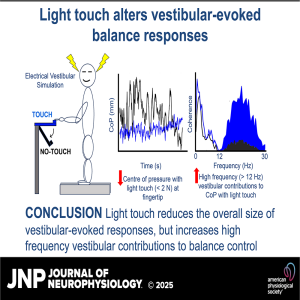
Friday Mar 07, 2025
Friday Mar 07, 2025
In this episode, coauthor Megan Goar discusses the recently published research titled "Light touch alters vestibular-evoked balance responses: insights into dynamics of sensorimotor reweighting." The research uncovers how minimal fingertip contact (light touch) during balance tasks can reduce the impact of electrical vestibular stimulation (EVS) on body sway. Not only does this touch alter sway magnitude, but it also reveals a high-frequency center of pressure element, tied to vestibular inputs, that is typically unseen in free-standing postures. Ms. Goar explains how these findings highlight the central nervous system’s remarkable ability to adaptively reweight sensorimotor processes to optimize balance control.
Journal of Neurophysiology 2025 133:1, 142-161
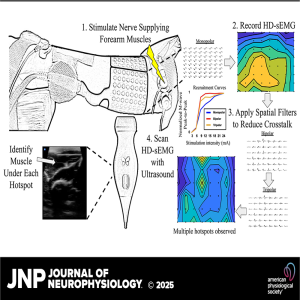
Friday Feb 14, 2025
Friday Feb 14, 2025
In this episode, coauthor Ernesto Bedoy discusses their recently published research, "Improving Localization and Measurements of M-Waves Using High-Density Surface Electromyography." The study presents an innovative approach to enhancing the measurement of evoked potentials through high-density surface electromyography (HD-sEMG). By incorporating spatial filters and ultrasound imaging, the research significantly improves the precision and localization of evoked potentials, providing a more accurate method for assessing motor pathway integrity. These advancements hold promise for developing better tools to detect and treat neurological deficits, offering a significant contribution to the field of neurophysiological research.
Journal of Neurophysiology 2025 133:1, 299-309
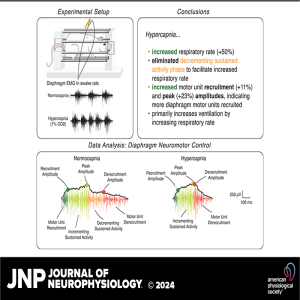
Friday Feb 14, 2025
JNP Podcasts: Hypercapnia elicits changes in diaphragm neuromotor control
Friday Feb 14, 2025
Friday Feb 14, 2025
In this episode, coauthor Obaid U. Khurram discusses their recently published research, "Hypercapnia Impacts Neural Drive and Timing of Diaphragm Neuromotor Control." The study explores the complex neuromotor control of the diaphragm muscle (DIAm) under hypercapnic conditions, an area that has not been fully understood. Dr. Khurram explains how hypercapnia increases motor unit recruitment and discharge rates, indicating an enhanced respiratory drive. The research also reveals how hypercapnia affects the postinspiratory (descending) ramp of diaphragm EMG activity, shortening it to facilitate faster respiratory rates. Tune in for valuable insights into the physiological mechanisms of diaphragm function and adaptation in response to elevated carbon dioxide levels.
Journal of Neurophysiology 2024 132:6, 1966-1976
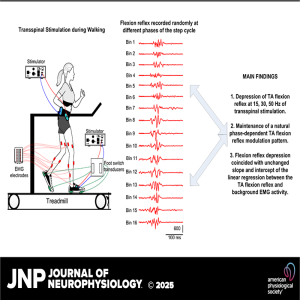
Friday Jan 31, 2025
JNP Micro Podcasts: Flexion reflexes during transspinal stimulation
Friday Jan 31, 2025
Friday Jan 31, 2025
In this episode, coauthors Maria Knikou and Abdullah M. Sayed Ahmad discuss their research on "Transspinal stimulation downregulates flexion reflex pathways during walking in healthy humans." The study investigates how transspinal stimulation over the thoracolumbar region affects reflex pathways during walking, revealing its ability to suppress the tibialis anterior flexion reflex at varying frequencies (15, 30, and 50 Hz).
Journal of Neurophysiology 2025 133:2, 530-538
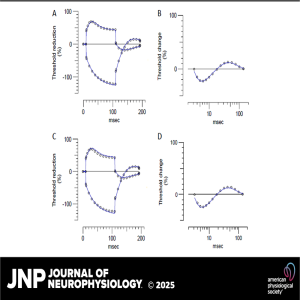
Friday Jan 31, 2025
Friday Jan 31, 2025
In this episode, coauthor Arun V. Krishnan highlights the article titled "Impact of glucagon-like peptide-1 receptor agonists on axonal function in diabetic peripheral neuropathy." Diabetic peripheral neuropathy is known to be relentlessly progressive and irreversible. Prospective studies in 24 participants with diabetic peripheral neuropathy (DPN) treated with glucagon-like peptide-1 receptor agonists (GLP-1RA) demonstrated improvements in clinical neuropathy scores, nerve conduction studies, and axonal excitability recordings. Analysis of axonal excitability recordings revealed the mechanism for GLP-1RA improvement in DPN were changed consistent with improvements in Na+/K+–ATPase pump function, and this was supported by mathematical modeling.
Journal of Neurophysiology 2025 133:1, 14-21
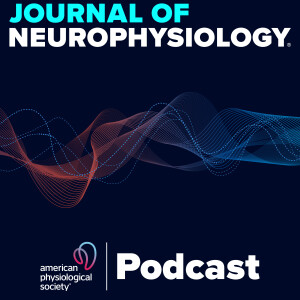
Friday Jan 31, 2025
JNP Micro Podcasts: Uncovering Balance Control from Foot Force
Friday Jan 31, 2025
Friday Jan 31, 2025
Join coauthors Rika Dimitrova and Kaymie Shiozawa in this podcast where they dive deep into their research on human balance control. In this episode, they explore the insights of three papers: "Frequency-domain patterns in foot-force line-of-action: an emergent property of standing balance control," "Human foot force suggests different balance control between younger and older adults," and "Human foot force informs balance control strategies when standing on a narrow beam."
Their work uncovers a novel, closed-form analytical result that links the frequency-domain patterns of foot force to the body’s neuromotor control during quiet standing. The podcast delves into the complexities of balance control in different age groups, demonstrating how older adults adapt their balance strategies to compensate for muscle weakness, relying more on neural feedback. With a focus on foot-ground force interactions, the duo breaks down how these findings can provide a new balance assessment tool, highlighting its significance in both research and real-world applications.
Additionally, Dr. Sugimoto-Dimitrova and Dr. Shiozawa discuss the challenges of maintaining balance in more demanding conditions—such as standing on a narrow beam—and explore how biomechanics and neural control work together to stabilize the body.
Journal of Neurophysiology 2024 132:5, 1445-1456
Journal of Neurophysiology 2024 132:5, 1457-1469
Journal of Neurophysiology 2024 132:4, 1302-1314
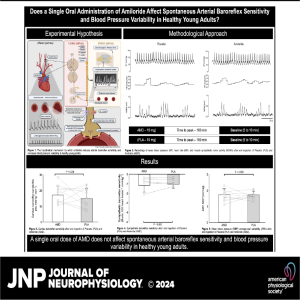
Thursday Jan 09, 2025
Thursday Jan 09, 2025
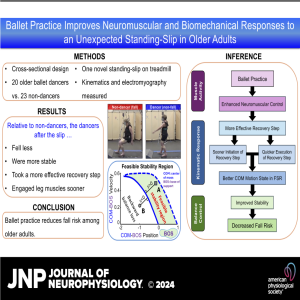
Thursday Jan 09, 2025
Thursday Jan 09, 2025
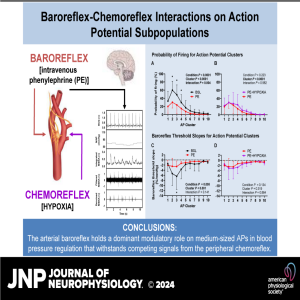
Thursday Jan 09, 2025
JNP Micro Podcasts: Reflex interactions on action potential subpopulations
Thursday Jan 09, 2025
Thursday Jan 09, 2025

